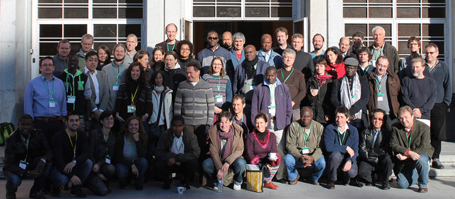Researchers know surprisingly little about where marine animals obtain their nutrients because the origins of nutrients used to be intractable once they had been digested by the animal. An international research team including scientists from Kiel’s Cluster of Excellence “The Future Ocean” has introduced a new method based on stable isotopes that can trace one of the most essential compounds for life, protein amino acids, back to their original source. These findings were recently published in the international journals PLOS ONE and ESA Ecology.
To address the issue of tracing the source of amino acids, Dr. Thomas Larsen of “The Future Ocean” collaborated with researchers from California and Alaska to develop a method that can determine where animals obtain these essential nutrients. They discovered that all life forms leave traces or ‘fingerprints’ in amino acids during biosynthesis. With these fingerprints, which are based on naturally occurring isotope variations, it is possible for the first time to distinguish between algal, bacterial, fungal and plant origins of amino acids through tissue samples. This discovery makes it possible to find out what animals have been feeding on without observing them directly or examining their stomach content.
“The new fingerprinting tool is particularly well suited for investigating foraging habitats and nutrient sources in marine animals,“ Dr. Thomas Larsen of CAU’s Leibniz Laboratory for Isotope Research points out. The newly developed method was applied in a study of the University of Hawaii on the feeding ecology of the green turtle Chelonia mydas living in the central Pacific Ocean. For these endangered marine turtles it is critical to gain insight into the turtle’s feeding habits and this requires a minimally invasive method. Here the fingerprinting method proved to be superior to more intrusive methods such as applying GPS-devices to the animals. From previous observations it is known that Chelonia mydas migrate between inshore areas and the open ocean. Juvenile animals stay offshore in the pelagic zone, whereas adult turtles move to coastal habitats. These different habitats are reflected in different diets: In inshore areas, turtles feed on plant based foods such as macroalgae, while pelagic turtles feed on animal based foods such as jellyfish. With the new fingerprinting method it has now become much simpler to determine where the turtles have fed. The study showed that the migration patterns and feeding ecology of these turtles are more complex than previously assumed.
An unknown aspect of the turtles’ nutrition was revealed in this study for the first time: microbes living inside the turtles’ guts synthesize essential amino acids that are passed on to their host. But only the turtles feeding on plant based foods receive microbial supplementation of amino acids. It appears that microbes responsible for the fermentation and digestion of less digestible foods in the turtle’s gut, also help in compensating for the nutritional insufficiencies of low quality foods. This microbial supplementation leaves a distinct fingerprint that can show with high certainty whether adult turtles have recently moved from inshore to pelagic habitats and vice versa. It is not well known how often and why adult turtles migrate to the open sea. A possible explanation could be to take on additional energy supplies from animal based foods for breeding. As these observations run contrary to the common understanding of marine turtles’ nutritional habits, this study demonstrates the fingerprinting method’s potential, not only to explore the complex relationships between a host and its intestinal microflora, but also to better understand the foraging habits and habitat requirements of marine species.
References:
[1] Thomas Larsen, Marc Ventura, Nils Andersen, Diane M. O’Brien, Uwe Piatkowski, Matthew D. McCarthy (2013). "Tracing Carbon Sources through Aquatic and Terrestrial Food Webs Using Amino Acid Stable Isotope Fingerprinting." Plos One 8(9). http://dx.doi.org/10.1371%2Fjournal.pone.0073441. For further information contact: Dr. Thomas Larsen, Kiel University; Email: tl@leibniz.uni-kiel.de or Phone: +49-431-880-3896,+49-177-829-3691 or Prof. Matthew McCarthy, University of California, Santa Cruz;
Email: mccarthy@pmc.ucsc.edu or Phone: 01-831-459-4718
[2] Karen Elisabeth Arthur, Shaleyla Kelez, Thomas Larsen, C. Anela Choy, Brian N. Popp, (2013). "Tracing the biosynthetic source of essential amino acids in marine turtles using δ13C fingerprints." Ecology (In Press).http://www.esajournals.org/doi/abs/10.1890/13-0263.1. For further information contact: Prof. Brian N. Popp, University of Hawaii;
Email: popp@hawaii.edu or Phone: 808-956-6206.
Links:
www.futureocean.org Cluster of Excellence „The Future Ocean“
www.leibniz.uni-kiel.de Leibniz Laboratory for Isotope Research, CAU Kiel
Contact:
Thomas Larsen, Leibniz Laboratory for Isotope Research, Kiel University
Phone: +49 431-880-3896
Email: tl@leibniz.uni-kiel.de
Christian Urban, Public Outreach, Cluster of Excellence „The Future Ocean“
Phone: +49 431-880-5627
Email: curban@uv.uni-kiel.de
…


